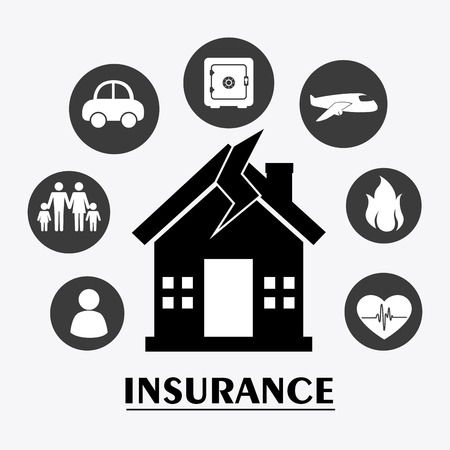Understanding Accidental Damage Cover in the UK
Accidental damage cover is a popular add-on for home insurance policies in the UK, offering protection against unexpected and sudden mishaps that cause physical damage to your property or belongings. Typically, this type of cover includes incidents such as spilling red wine on the carpet, smashing a television screen, or drilling through a water pipe by mistake. However, it is crucial to note that not all accidents are covered—common exclusions often include wear and tear, pet damage, faulty workmanship, and intentional acts. For UK policyholders, accidental damage cover is particularly relevant due to the unpredictable nature of daily life and the potential high costs of repairs or replacements. With many homes filled with valuable electronics, bespoke furnishings, and personal items, even a single accident can lead to significant financial loss without suitable insurance protection.
How Much Does Accidental Damage Cover Typically Cost?
When considering accidental damage cover in the UK, it’s important to understand both the typical price range and the factors that influence these costs. Accidental damage is usually offered as an optional add-on to standard home insurance policies, and its price can vary significantly depending on several elements.
Typical Price Range for Accidental Damage Add-ons
The cost for accidental damage cover generally falls between £25 and £70 per year, depending on whether you’re adding it to buildings insurance, contents insurance, or both. Some insurers offer tiered pricing based on the level of cover or the value of your property and possessions.
Key Factors Influencing Costs
- Property Type: Larger properties or those with high-value contents typically attract higher premiums.
- Level of Cover: Comprehensive cover (including both buildings and contents) will cost more than a basic policy.
- Location: Properties in areas with higher claim rates may see increased premiums.
- Claims History: Previous claims can push up the price of accidental damage add-ons.
- Insurer Policies: Each insurer uses its own risk assessment and pricing model.
Common Pricing Examples from Leading UK Insurers
| Insurer | Add-On Type | Annual Cost (£) |
|---|---|---|
| Aviva | Contents Only | From £25 |
| Direct Line | Buildings & Contents | £40–£60 |
| LV= (Liverpool Victoria) | Contents Only | Around £30 |
| Churchill | Buildings & Contents | £35–£55 |
| Halifax | Buildings Only | Around £27 |
A Note on Excesses and Limits
Most accidental damage policies come with an excess—typically ranging from £50 to £250—which you’ll need to pay if you make a claim. Some policies also impose limits on single-item claims or total payouts, so reviewing the terms is essential before purchasing additional cover.

3. What Affects the Price of Accidental Damage Cover?
When evaluating the cost of accidental damage cover in the UK, it is crucial to understand the key factors that influence premiums. Insurers assess a range of variables before determining your quote, and being aware of these can help you make informed decisions about your policy.
Property Type
The kind of property you wish to insure plays a significant role in setting your premium. Detached houses, for instance, often attract higher premiums than flats due to their larger size and increased risk exposure. Older properties or those with unique features—such as listed buildings—may also incur additional costs because repairs can be more complex and expensive.
Cover Limits
Accidental damage cover is not one-size-fits-all; insurers offer varying levels of protection. Policies with higher cover limits—meaning they will pay out more in the event of a claim—naturally come with higher premiums. It’s important to balance your need for adequate protection against what you’re willing to pay annually.
Claims History
Your personal claims history directly impacts how much you’ll be charged. If you have made multiple claims in the past, insurers may view you as a higher risk and increase your premium accordingly. Conversely, a clean record can work in your favour, potentially earning you discounts or access to more competitive rates.
Location
Where your property is situated within the UK is another critical variable. Homes in areas prone to flooding, subsidence, or high crime rates will generally face steeper premiums. Insurers use postcode data to evaluate risk, so even neighbouring streets can see notable differences in cost.
Summary: Weighing Up Your Risks
Understanding these factors enables homeowners and tenants alike to anticipate how much accidental damage cover might cost them—and why quotes can vary dramatically from one household to another. By considering property type, cover limits, claims history, and location within the context of UK insurance practices, policyholders can better evaluate value for money when selecting their level of protection.
4. Accidental Damage Add-On vs. Comprehensive Cover
When considering accidental damage cover in the UK, policyholders are often faced with a choice: should they purchase an accidental damage add-on as part of their home insurance, or is it more cost-effective to opt for a comprehensive policy that includes accidental damage as standard? Understanding the differences in scope, pricing structure, and claims processes is essential for making an informed decision.
Key Differences Between Add-On and Comprehensive Cover
| Aspect | Accidental Damage Add-On | Comprehensive Policy |
|---|---|---|
| Coverage | Usually covers specific accidental events (e.g., spilling wine on carpets, smashing TV screens) | Broad protection including accidental damage plus other risks (theft, fire, flood, subsidence) |
| Cost Structure | Additional premium on top of basic policy; typically £20–£60 extra per year | Higher overall premium; accidental damage is integrated into one price |
| Claims Limits | Often lower limits for individual items or incidents | Higher claim limits; sometimes higher excesses apply |
| Policy Terms | Add-on can be removed or adjusted annually at renewal | Fixed terms and conditions; less flexibility in removing cover elements |
Is Standalone Accidental Damage Good Value?
If your household is low-risk—perhaps you do not have children or pets, and rarely host guests—a standalone accidental damage add-on may suffice. For example, adding this cover to a contents insurance policy could increase your annual premium by only £30–£50, offering targeted protection without inflating your overall costs. However, be aware of sub-limits; some policies cap payouts for certain items (such as electronics) or exclude gradual deterioration (like wear and tear).
The Comprehensive Policy Option: All-in-One Peace of Mind?
A comprehensive home insurance policy bundles accidental damage with other perils under one umbrella. While premiums are typically higher—often £300–£500 annually for a standard property—the breadth of cover means you are protected against a wider range of eventualities. This approach suits those seeking simplicity and robust risk mitigation, especially if you own high-value possessions or live in a busy household.
UK Insurance Terminology Reference
- “Buildings Insurance” covers the physical structure; “Contents Insurance” covers belongings inside the home.
- “Accidental Damage” refers to sudden, unforeseen events causing physical loss or harm.
- “All Risks” is sometimes used interchangeably with comprehensive cover but check for exclusions in the policy schedule.
Summary Table: Which Option Offers Better Value?
| Your Needs | Add-On Best For… | Comprehensive Policy Best For… |
|---|---|---|
| Low risk/limited valuable items | ✓ | |
| High-value property/many risks | ✓ | |
| Tight budget/flexible cover needed | ✓ |
The decision ultimately comes down to balancing cost against peace of mind. By reviewing your risk profile and understanding UK policy structures, you can determine whether an add-on or a comprehensive plan offers true value for money in protecting your home and belongings.
Is Accidental Damage Cover Good Value for Money?
Assessing the value for money of accidental damage cover in the UK requires a pragmatic look at typical household scenarios, claim types, and prevailing consumer attitudes. For many households, accidental damage incidents—such as wine spills on carpets, broken televisions, or dropped mobile phones—are not rare events. The average cost for standalone accidental damage cover ranges from £25 to £60 annually when added to buildings or contents insurance, with excesses typically set between £50 and £100 per claim.
Cost-Benefit Analysis in Everyday UK Households
The benefit of purchasing accidental damage cover is most evident in homes with children, pets, or high-value items prone to mishaps. A single claim for a stained sofa or cracked glass door can exceed several years’ worth of premiums. Conversely, households without such risk factors might find limited financial justification unless they own expensive electronics or furnishings.
Types of Claims and Payout Likelihood
Data from UK insurers suggests the most common claims involve electronics, furniture, flooring, and fixtures. Average payouts vary but often start at £200 and can run into thousands for major incidents. However, policyholders must be mindful of exclusions: gradual wear and tear, deliberate acts, and certain accidental losses may not be covered.
Consumer Perspectives: Is It Worth It?
UK consumers are generally cautious about insurance add-ons; many weigh up the odds of making a claim versus the cumulative premium cost. For risk-averse individuals or those who have previously made successful claims, accidental damage cover offers peace of mind and perceived value. Meanwhile, others may prefer to self-insure by setting aside an emergency fund rather than paying extra for uncertain protection.
In summary, accidental damage cover can represent good value for money in households with higher risk profiles or valuable possessions. For others, its merit depends on personal risk tolerance and the likelihood of making a claim significant enough to offset the cost of premiums and excesses.
6. Tips to Make the Most of Your Accidental Damage Policy
When considering whether accidental damage cover is worth the investment, it’s essential to approach both selection and management of your policy with a practical, UK-specific mindset. Here are some tips to help you extract maximum value for money:
Evaluate Your Needs Realistically
Before purchasing accidental damage cover, take stock of your household setup and lifestyle. For example, families with young children or pets may face higher risks of accidental mishaps, making broader coverage more sensible. On the other hand, if you live alone or rarely entertain guests, a basic policy may suffice. Always weigh the likely frequency of claims against the annual premium and excess.
Compare Policies Across Providers
Don’t settle for the first quote. Use UK-based comparison websites and check the details of what each provider includes as ‘accidental damage’. Some insurers offer only limited protection as standard, requiring an additional premium for comprehensive cover. Scrutinise exclusions—such as wear and tear, deliberate acts, or gradual deterioration—as these can vary significantly between providers.
Understand Your Excess and Claim Limits
The excess (the amount you pay towards any claim) can impact whether it’s worth claiming for minor accidents. If your excess is £200 but your damaged item is only worth £250, a claim may not be financially beneficial. Likewise, check if there are any single-item limits or overall caps on what you can claim in a year.
Keep Proofs of Purchase and Documentation
In the event of a claim, UK insurers often request evidence such as receipts, photographs, or serial numbers. Proactively keep digital copies of key receipts and consider photographing high-value items in situ at home. This can speed up your claim and reduce disputes over item values.
Report Accidents Promptly and Accurately
If an accident occurs, notify your insurer as soon as possible—even if you’re still deciding whether to claim. Provide honest, detailed accounts of what happened and supply supporting documentation promptly. Delay or inaccurate reporting can lead to rejected claims under UK insurance law.
Review Your Policy Annually
Your needs—and the market—change over time. Each year at renewal, re-evaluate whether your cover level and insurer still offer best value. Shop around to see if another provider offers better terms for a similar price or consider bundling policies (like contents and buildings insurance) for potential multi-policy discounts.
Final Thought
By taking a proactive approach to evaluating, purchasing, and managing accidental damage cover, you’ll ensure that any premiums paid genuinely deliver peace of mind—and real financial benefit should the unexpected occur.


